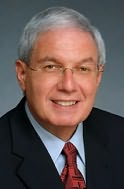- Shopping Bag ( 0 items )
-
All (79) from $1.99
-
New (13) from $7.63
-
Used (66) from $1.99





Overview
Never before has a journalist penetrated the wall of secrecy that surrounds the U.S. Secret Service. After conducting exclusive interviews with more than one hundred current and former Secret Service agents, bestselling author and award-winning reporter Ronald Kessler reveals their secrets for the first time.
• George W. Bush’s daughters would try to lose their agents.
• Based on a psychic’s vision that a ...